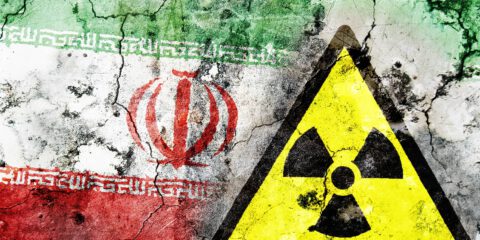Reliable deterrence is a vital interest of the West, and developing a strategy for reliable deterrence without escalation is also essential. The West could prevent escalation if it manages it carefully and with determination and credibility.
The purpose of this policy paper is to present a concept for dealing with nuclear blackmail. Although this case deals with Russia’s nuclear threats in Ukraine, it also offers an approach in principle to deal with nuclear threats intended to obtain political or military concessions. It also explains why it is necessary to take Russian nuclear threats seriously; what they mean for Europe and the rest of the world, now or in future scenarios; and how to deter Russia from carrying out these threats or ensure that if it does carry out its threats, it will not win concessions. All this without increasing the risk of an all-out nuclear war.
A. The likelihood of Russia using tactical nuclear weapons is low, but such a threat must be taken seriously
The war in Ukraine recently led to the escalation of nuclear threats from Russia. Of note is the explicit statement of former president Dmitry Medvedev that Russia will defend itself “by all means,” and that he believes NATO countries will put their security before that of Ukraine. In other words, he does not think that NATO will intervene in the event of the use of nuclear weapons.
Even more straightforward, a member of the Russian Security Council also threatened that Ukraine’s accession to NATO would mean World War III.[1]
It is generally believed that the Russian nuclear threat to Ukraine refers to the use of tactical nuclear weapons, i.e., a relatively small warhead with minor damage, although huge compared with conventional bombs.
The response of Western countries to these threats was often ambiguous. For example, NATO Secretary-General Jens Stoltenberg said that “any use of nuclear weapons would fundamentally change the nature of the conflict, and have severe consequences,” and that such use “will mean that a very important line has been crossed.” However, he also noted that “the circumstances in which NATO might have to use nuclear weapons are extremely remote.”[2]
The Ukraine crisis raises the question of how the West should treat the Russian nuclear threats. Some argue that it is essential to be careful not to upset Putin over a fear of his[יה1] [E2] using nuclear weapons. One of the apparent consequences of this approach is the encouragement of nuclear blackmail. Some believe ignoring such threats is okay because Russia would not dare use nuclear weapons. This claim is convenient because it does not require a response. However, it must be doubted, and not only because some of its advocates believe, on the one hand, that Putin is an unpredictable madman, and on the other, that he is sane enough not to dare use nuclear weapons, but also because the assumption that the results are favorable is a great temptation to hold onto, even if it does not match reality. Another opinion maintains that Russia can threaten to use nuclear weapons, but the threats should be ignored, as the price of giving in to nuclear blackmail would be too high.[3]
In practice, it seems that Russia’s chances of using tactical nuclear weapons in Ukraine are very low for several reasons: first, while it is impossible to guarantee that Putin will never resort to nuclear weapons, most visible evidence suggests that practical steps are not accompanying the nuclear threats.
Triggering a nuclear weapon is not a simple decision to activate an available weapon – nuclear warheads are stored in known locations and separate from launch platforms. Likely, Western intelligence services are continually monitoring the storage centers of nuclear warheads. Hence, it is difficult for Russia to attempt large-scale covert movements or preparations. However, one cannot rule out the possibility of deception or a ruse that would bring a tactical warhead to the battlefield without advanced warning.
Second, using nuclear weapons has significant internal consequences in Russia. In the words of Mikhail Khodorkovsky, one of Putin’s opponents, using nuclear weapons is equivalent to holding a referendum on Putin’s legitimacy because “pressing the red button” is a metaphor and not a single push by the leader of a country: a “red button” is nothing but the activation of a chain of commands down the military hierarchy. Such an order would go through a few more officers. One of those officers may refuse to carry out the order, evade its execution, or delay it due to the seriousness of the situation. Putin is not likely interested in putting the absolute loyalty of his officers to such a practical test, except if he feels that his rule is seriously endangered. Although the military is a hierarchical organization, the decision to use nuclear weapons, as well as the activation of all the relevant Command and Control systems, was, and remains, a collective decision, even if only from a purely technical point of view,[4] because the possibility of refusing an order or preventing its execution always exists. In other words, the Russian leadership will likely only want to test its forces’ absolute loyalty in a situation where the Russian leader sees a real, inescapable threat.
In light of this, the most likely possibility is that the Russian nuclear threats are propaganda for internal purposes, or are a means of blackmailing the West and the United States to create pressure specifically against Ukraine. That is a tempting possibility for three reasons: Russia’s lack of ability to issue more convincing threats; deniable actions such as sabotaging the Nord Stream pipeline (if indeed Russia did it) that did not bring about a positive result as far as Russia is concerned; and that the Russian tactical situation in Ukraine does not seem to be improving, especially after the evacuation of Kherson.
Nuclear threats may be used in the hope that Western countries will pressure Ukraine to limit its progress – and even agree to a settlement arrangement in favor of the Russians, since the continuation of the “reckless attack” by the Ukrainians could cause Russia to escalate further. For example, it is likely that the recent announcement by the US defense secretary about the US’s limited ability to assist Ukraine further – a statement that followed shortly after US President Joe Biden expressed concern over nuclear escalation – is part of an effort to pressure Ukraine, in order to limit the possibility of escalation that may lead Russia to use tactical nuclear weapons.
However, even if the chances of using nuclear weapons are low, it does not mean one can ignore these threats entirely. Believing that using nuclear weapons is impossible confuses what is desirable with what is possible – and there is also the possibility that an unexpected mistake may occur.
Moreover, the differences between the Russian and Western approaches regarding the use of nuclear weapons lead to a situation where the Russian government could believe that the counter-threats of the US and the NATO alliance lack credibility, while the continuation of the threat of nuclear weapons – whether Russia intends to use them or (and more likely) it does not – is beneficial.
In the West, the concept of MAD – Mutually Assured Destruction – is accepted among most decision-makers (and the general public) that assumes the capacity for mutual destruction by both warring parties will prevent the outbreak of nuclear war. This concept often translates into the assumption that crossing the nuclear threshold leads to a different kind of war, meaning that any use of nuclear weapons will lead to a world war. Hence, such use is impossible for a rational nation.
However, in terms of Russian doctrine, this assumption is incorrect: the contemporary Russian doctrine[5] assumes that Moscow may use nuclear weapons in the face of a nuclear attack against it or its allies, or in the face of a conventional threat that endangers Russia’s very existence.
In other words, Moscow does not assume that the only situation of using nuclear weapons is a world-destroying nuclear war. For Russia, crossing the nuclear threshold does not necessarily change the nature of the war. Accordingly, and rightly from Moscow’s perspective, there are more possibilities for nuclear threats than according to the accepted Western concept since they do not have to develop into Mutually Assured Destruction.
One can, of course, doubt the commitment of the Russian elite – both political and military – to its military doctrine. One can assume that the survival interests of Putin and his regime will play a more critical role than the doctrine in any decision on the use of nuclear weapons. However, this means that the survival interest of the regime, even without a real danger to Russia’s existence, may push it to cross the nuclear threshold.
In addition, the doctrine represents a way of thinking that the Russian government wishes to present internally and externally. Such thinking places fewer restraints on the use of nuclear weapons, not all types of which are considered “doomsday” weapons, and therefore are not subject to all existing restraints when it is assumed that the only possibility of using nuclear weapons is for Mutually Assured Destruction.
Aside from that, not only are there many who doubt whether the MAD concept is the key to understanding why there has not yet been a nuclear war since Hiroshima and Nagasaki, but that Ukraine is one case that deviates from the Western concept of deterrence against nuclear weapons, which assumes that these are two countries that threaten each other in a nuclear way. In contrast, Ukraine is not a member of NATO, and the expansion of the Western response policy to include the use of nuclear weapons in Ukraine would require the NATO alliance to risk all its countries in a nuclear war to protect a country that is not a member of the organization. In other words, MAD is unsuitable in a situation where a nuclear power directly threatens a non-nuclear third party.
No wonder then that in such a situation, the Russians believe that the threats against them are not credible: from an economic point of view, they can believe that either most of the possible measures to take against Russia have already been taken or that they can withstand additional sanctions, and in any case, most of the countries of the world do not fully cooperate with the sanctions; and from a military point of view, Russia has no reason to believe that the use of tactical nuclear weapons will necessarily lead to a nuclear response from NATO, and not even a conventional military response, for fear of an escalation.
One should only recall former US president Barak Obama’s famous statement about a “red line” in Syria – yet despite crossing that red line, Bashar Assad is in power (thanks in no small part to an effective Russian intervention). If, God forbid, the Russian threat occurs on a small scale, the reader can only imagine whether the citizens of Germany would be willing to respond in kind and risk a nuclear strike on Berlin because Putin detonated a small nuclear device of several kilotons in front of a Ukrainian force in an open area in Ukraine. Such an explosion, of course, will challenge the basic assumptions of the Western security concept regarding the use of nuclear weapons – and may also be a signal for the future. The incentive for no response (or a minimal response) by the West will be great, but the incentives for Russia’s further use of nuclear weapons will increase if the initial use achieves its goals. It will also create a situation where it would be worthwhile for other countries to follow suit.
Russia may also interpret Western weakness in the international arena (such as the disdain shown by the Saudis toward the Biden administration’s requests to increase oil production)[6] as indicating an inability or unwillingness to engage in confrontation, and therefore believe that the use of nuclear weapons will lead the US to withdraw from a conflict with Russia over Ukraine out of fear of sliding into a nuclear conflict.
The US explicitly sees such a threat from Russia, and not only because of Ukraine. In its new security strategy, which places China as the leading emerging challenge to US security, Washington sees Moscow as an immediate “serious threat,” which includes the possibility of “nuclear threats against the US and its allies and partners.”[7]
In light of this, ignoring and hoping are unrealistic alternatives. Nevertheless, threats by NATO are not necessarily a credible deterrent – and failure to deter the use of nuclear weapons will have dire consequences.
The Russian and American doctrines are similar in that they do not include a commitment not to be the first to use nuclear weapons, and they limit their use to extreme situations. However, the decision-making in Putin’s Russia differs from the post-Stalin era Soviet Union, which was the main adversary when the aforementioned MAD concept was developed – and not necessarily for the better.
Unlike the Politburo, which was not democratic but functioned formally and procedurally and had room for expressing different opinions regarding routine decision-making (for example, before Soviet leader Leonid Brezhnev made the final decision to send a limited military force to Afghanistan), today’s Russia is a classic dictatorship. In the end, Putin alone makes decisions. As far as is known, he does not tolerate any controversy and is entirely dependent on the information provided by his gatekeepers.
The USSR was not a kleptocratic country, despite the corruption and inefficiency that characterized the Communist regime. The leaders of the Soviet Union were experienced politicians, many having survived Stalin’s purges and World War II, and therefore were cautious with nuclear weapons and the possibility of going to war. Putin was born after World War II, never served in the military, and never led any political body before he became president. It is hard to see any orderly decision-making and staff work in today’s Russia. Even if one does not fully accept the problematic situation regarding the low level of Russian diplomats, there is a reason for concern.[8]
It seems that the Foreign Ministry has little influence on the top echelon. Moreover, if we accept the claim of the sources close to Putin – as revealed in the investigation conducted by journalist Farida Rustamova according to which Putin does not know how to lose, the option of a military defeat in Ukraine is not even taken into account, and no one dares broach it[9] – then there is also reason to fear that the desire to prevent a military defeat could lead to the use of nuclear weapons.
To sum up: on the one hand, the use of tactical nuclear weapons in Ukraine remains a remote possibility, as statements and threats like those of Medvedev (who lacks independent power and has no political future without Putin) indicate more a desire to please Putin than a plan for nuclear escalation. At the same time, the nature of the regime in its disorganized decision-making procedure precludes saying that such an escalation cannot occur.
B. The West cannot afford not to deter
If the West does not want to allow continued nuclear blackmail or risk the possibility that tactical nuclear weapons will indeed be used in Ukraine and prevent future consequences should such a use occur, it will have to deter Russia from using tactical nuclear weapons in Ukraine and the use of nuclear threats as a helpful tool. Toward this end, the West faces two problems: first, if the Russians are not ready to lose, it will be difficult to dissuade them; and second, if they perceive governments in the West as weak, the credibility of their threats will be correspondingly weak.
Moreover, despite the slight chance that Russia will use nuclear weapons, a severe response will be required – even in the face of a possible escalation – if Russia does use a tactical nuclear weapon, regardless of how small. Otherwise, the breaking of the nuclear taboo will allow for further threats.
The consequence of using nuclear weapons will not stop in Ukraine. If the use of tactical nuclear weapons is left without a crushing and devastating response against Russia, then Iran, China, North Korea, etc., may draw the necessary conclusions from the Russian experience and adopt open nuclear blackmail. Such a development would be disastrous, and not only for Israel: if an increase in security tension inches toward an atomic threshold, countries such as Israel, Taiwan and Saudi Arabia will be accused of causing the escalation. They will be required to make considerable concessions because it will be necessary to exercise extra caution with Pakistan or Iran or China owing to their nuclear weapons stockpile – and countries without nuclear weapons will accelerate the race to the bomb. Surrendering to nuclear blackmail on the assumption that Ukraine is more important to Russia than to the West and that it is in a “Russian zone of influence”[10] will also lead to a similar result: the Iranians, for example, can claim that due to the Shi’ites in Lebanon and the Shi’ite history there, Lebanon is part of their sphere of influence, etc.
Opening the gate to nuclear blackmail will not stop after one time.
C) A conventional deterrence strategy against a nuclear threat
The way to deter Russia’s use of tactical nuclear weapons in Ukraine should be to take the threat seriously, on the one hand, while also making clear that its implementation will exact a heavy military – and not just political or economic – price from Russia. That heavy price is one that Russia will find challenging and particularly unwilling to meet, but it will also not be a reason for Russia itself to use nuclear weapons. Thus, a sharp military response over the use of nuclear weapons will be required – but not necessarily a response with atomic weapons. That this will be the reaction from the West should be clear and absolute. Without credibility regarding the intention and determination to act, the threat of a response as a warning has no meaning.
The message from the West must be reliable, simple, and not amenable to any other interpretation, so that no one at the top level of Russia can “soften” the message for the country’s leader or expect such a response to be non-military sanctions – more severe but manageable.
Second, the West will have to demonstrate a military capability to exact a price – a problematic issue due to the long-term neglect of conventional military capabilities in many NATO countries. However, the fundamental principles below can be used as a compass to build or employ existing forces. Moreover, despite its problems, the capabilities that currently exist in the West can still inflict heavy damage on Russia – especially after the heavy losses it has suffered in recent months in equipment and personnel – damage that cannot be ignored. Russia’s army, considered by many experts in the West – including most of the military and political elite – as a first-rate threat, suffered a heavy blow in Ukraine due to the heavy losses and weak performance. Although their usefulness is limited, Western sanctions interfere with developing and producing advanced weapon systems with Western parts. In this sense, the balance of power improved in favor of the West.
Even if the mobilization announced by Putin is successful, it will take time to change the current trends on the front lines. At the moment, Russia seems to have exhausted the potential of a large-scale ground attack in Ukraine. Despite its vast arsenal of artillery ammunition and a large air force, it lacks quality intelligence, and its forces are of relatively low skill. Therefore, there is no room for a paralyzing fear of conventional “military surprises” by Russia. Russia has better reason to fear “military surprises” from the West – and an explicit clarification that the use of nuclear weapons would mean such “surprises” would be meaningful. That it is a threat with relatively limited use of force can contribute to its credibility.
D) How should one prepare for deterrence against the use of tactical nuclear weapons or a response to their use?
The approach presented above to achieving deterrence against tactical nuclear weapons should be based on a focused strategy, with clear and limited goals for the use of force, and avoiding an attempt to expand the threat or the goals beyond what is believed required to achieve deterrence. In other words, the goal should be creating deterrence and harming the offensive military force, not a change of government or a regime change.
The goals of such activity – to prevent the use of tactical nuclear weapons or impose punishment in response to its use – must be clear to the citizens of NATO countries and Russians at all levels. It should be made clear, and in advance, that the goal is a heavy punishment for crossing the nuclear threshold and for the danger Russia creates for Europe in particular and the world in general by activating nuclear weapons. Such a military response would have no intention of harming the territorial integrity of Russia (a grievance that would create a reason for further employment of tactical nuclear weapons) but to inflict such severe damage on the Russian forces that the result of activating nuclear weapons by Russia would be the strengthening of the Ukrainian position in the rest of Ukraine and the weakening of Russia.[11]
It is possible to choose targets for such a response that would have a severe impact on Russian forces:
* air bases near Ukraine
* destruction of facilities at Russian naval bases in the Crimea
* destruction of the Kerch Bridge
* an attack on military and army headquarters in the sectors adjacent to Ukraine
* destruction of anti-aircraft batteries in the sectors of operation
* the destruction of critical railway junctions.
The targets mentioned above are relatively close to Ukraine. They can be attacked from the air, and such an attack will immediately damage the operational capacity of the Russian army on the Ukrainian front.
In addition, such an attack is not intended, and must not be planned, for regime change or for dictating to the Russian people what type of regime they should choose. Not only is there no guarantee that Putin’s replacement will be better in the absence of replacing the entire administration, but such a goal would be problematic due to the severe problems the US and its allies encountered in former attempts at regime change. Moreover, setting such a goal could damage public support for punitive measures or aid to Ukraine due to the fear that it will develop into a ground operation or a new long-term Vietnam or Afghanistan-style entanglement.
The only goal should be to collect a price for intolerable behavior and create certainty that collecting such a price will indeed be forthcoming.
The basic principles for collecting such a price will be:
1. First, clarifying to Russia that the use of nuclear weapons against countries friendly to the West – even if they are not in an official military alliance[12] – would be considered a declaration of war. It should be made clear that there are enough non-nuclear measures in the West’s military arsenal, and that NATO will not intervene directly in the war except in such a case (although the West is involved in extensive aid to Ukraine, and proxy wars and comprehensive aid from both sides have also been conducted in the past, for example, in the Vietnam war and even the Israel-Arab wars. There is a big difference between offering supplies to one of the parties and the active participation of superpowers in fighting each other).
Naturally, some will also see this reservation as an inevitable surrender. However, since it is clear that NATO has no intention of directly intervening in the war in Ukraine, the meaning of such a clarification is nothing more than stating the obvious to define the non-obvious: there will be no response with non-conventional weapons, but there will be a reaction with conventional weapons. A declaration of a response with conventional weapons is more reliable than vague statements about “crossing a line” or hinting at a nuclear war because there is a chance it will come true. It is clear to Russia that NATO will not want to fight to the last European for Ukraine. It will be much less clear to Russia, especially in light of the larger-than-expected Western aid to Ukraine so far, that NATO will refrain from attacking Russian forces by conventional means in response to the use of nuclear weapons against Ukraine. Such a statement would, at the very least, sow more uncertainty for Moscow since the probability of its occurrence is higher than a counter-nuclear threat. Therefore, there is a greater chance that Russia will be required to take this threat more seriously and take it into account – but only if it has reason to think that the statements and threats are credible, and not if it believes that using such a weapon will prevent a confrontation with the West. Accordingly, such a policy can only be convincing if all of NATO commits to it, or if the US decides to commit to it alone. If Russia thinks that NATO members can vote against the policy to thwart it, then the policy will not be credible.
2. For the threat to be credible and a deterrent, it must be specific and backed by appropriate preparation. Such a threat could include a message (covert or overt, depending on the degree of directness in the Russian statements): if tactical nuclear weapons are used – which, as mentioned, will be considered a declaration of war – NATO forces will immediately attack Russian military targets along the entire front in Ukraine, as well as vital military headquarters and facilities, and essential military infrastructure facilities relatively close to Ukraine. As mentioned, air bases, central railway junctions, supply depots, and headquarters can all be a target for an attack.
From time to time, it would also be possible to publish (or transmit to the Russians) updated photographs of Russian headquarters or such facilities to constantly demonstrate to the Russians what is at risk and their limited ability to camouflage critical military facilities. Naturally, this would also require continuous intelligence surveillance to thwart camouflage attempts. The chance that Russia takes in the case of using tactical nuclear weapons in Ukraine in such a situation is that it risks dragging in the Western countries, in light of their defined statements and preparations, instead of pushing them away. The entry of Western countries into that fight will greatly aggravate Russia’s situation in Ukraine and destroy any possibility of Russia using tactical nukes. Of course, there is a risk of escalation in such a statement if Russia ignores it – but there is no deterrence without credibility. Those unwilling to escalate in response to a threat will not be able to deter, as their statements will be an empty vessel. Moreover, since the price of inaction would be very high, the benefit of such a threat is there. Si vis pacem, para bellum.
3) Such a declaration will only be reliable if, as mentioned, it is backed by actions that indicate preparedness for a response. Forces required for a response should be placed on constant alert. Western countries will be required to deploy fighter jets (and the anti-aircraft batteries and guard forces that protect air bases) to an attack range of Ukraine and its surroundings; air defense batteries will need to be stationed close to Ukraine to protect the neighboring countries from the possibility of a Russian surprise strike designed to disable part of these forces. Of course, such a strike would be a declaration of war on its own. Still, Russia – should it decide to use tactical nuclear weapons in Ukraine – may think that conventional warfare against a damaged Western military is preferable to such warfare against an intact Western military. The possibility of conventional action by Russia near its borders in Western Europe is not necessarily more far-fetched than the possibility of using tactical nuclear weapons in Ukraine, primarily when the use is intended to remove a credible threat. Accelerating projects such as the Aegis Ashore Missile Defense System – which is supposed to be built in Poland – and its expansion to other countries will be an essential step, as they will convey that the West is seriously preparing for escalation, and NATO is at least protecting itself against the possibility of a nuclear weapon being mishandled.
The Western countries’ insistence on Russia’s sovereignty when it does not respect their sovereignty is not a good step. Response measures to Russian provocations will also be helpful. Suppose the Russians invade the airspace of NATO countries, even for a few seconds. In that case, there is no reason why this provocation should not receive a similar response that would also include blinding Russian radars or similar measures that do not cause casualties. Naturally, there is a fear that such a deployment against Russia will dilute the American deployment against China, which, as mentioned in the new American national security strategy, is defined as a more significant threat than Russia.
However, in practice, this is a minor concern. From the political perspective, it does not seem that there is coordination between Russia and China, although China could of course try to use the situation to its own benefit.
Additionally, on the military side, the naval and marine forces that would assist Taiwan are not the air forces that the USA can deploy in Europe due to Taiwan’s distance from any American base, and some of the air forces of NATO countries in Europe can also be used for these purposes. Of course, it will require a concerted effort to deploy forces immediately, especially in light of the low competence of some of the NATO militaries. However, they may be required to make this effort if NATO wants to deter a nuclear threat.
4) Preparation for such an attack should take place by air forces only. It should not be accompanied by substantial ground reinforcement, as Russia could easily interpret such support as indicating an intention to invade. Unlike airpower alone, which will cause heavy damage but will not constitute an invasion, airpower, together with ground forces, is a threat of a ground invasion, and, depending on its chances, of leading to further escalation or the start of a significant preventive war. Today, the US deploys military units for training and demonstration of power, such as the 101st Airborne Division recently did in Romania.[13] That is not a problem in itself, but if NATO reinforces air forces for deterrence and accumulates ground forces near the border, the likelihood of escalation and a large-scale war increases significantly. It will be possible to deploy units to protect airfields and supply routes, but avoiding a large-scale deployment of land forces will be essential.
5) Alongside the overt actions designed to create deterrence, a non-public message can be conveyed to the Russians that in the event of the use of nuclear weapons or signs that their activation is imminent, they will suffer – alongside an overt military response – a cyberattack by all possible means. Such a message should be secret because countries currently do not want to reveal their cyber capabilities, and such actions are deniable. Russia’s business and government centers rely on computing and networking as much as any other Western country. Cyberattacks can cause additional heavy damage.
The message to Russia must be secret but understandable and unambiguous to avoid misinterpretation. Moreover, it should be accompanied by demonstrative but non-lethal offensive cyber measures, which for their part – in light of the West’s superiority in the field – can demonstrate to the Russian elite the price that can be exacted even without the use of overt military force.
Summary
A strategy for a massive conventional response to the use of tactical nuclear weapons against a third party could allow the West to prevent such use. Nevertheless, it can demonstrate that such use is not profitable even if it fails to prevent it. Since it does not carry with it the immediate possibility of nuclear war, it will be easier to decide on its use. For the same reason, the threat of it is more credible than the threat of a nuclear response that requires countries to risk nuclear war to protect a third party.
As mentioned, the purpose of such a deterrence strategy is not to defeat Russia through a direct military threat, a process that inevitably leads to an escalation of the conflict. Such a deterrence strategy, aware of the problems but also of the power of the Russian military, would seek to take advantage of the current conventional inferiority of the Russian army – as revealed in the fighting in Ukraine – to make use of nuclear weapons or the threat of using them unprofitable. To prevent a nuclear disaster, the Russian leadership must understand that it risks a conventional war with several NATO countries if it uses nuclear weapons. Russia would not be able to win such a conventional war, after the heavy losses it has suffered in the nine months of fighting in Ukraine. The “normal” fighting on the ground is one thing in which the situation and the parties’ actions are known. However, the use of nuclear weapons will be met with conventional force – but so much force that even the threat of using nuclear weapons will be less effective.
The West is interested in preventing nuclear weapons from becoming an influential political blackmail card (of course, North Korea has already made limited use of nuclear blackmail). If the nuclear blackmail card is successful, it will appear more and more on the world stage, and the more it occurs, the greater the chance of nuclear escalation, whether on purpose or by mistake. Therefore, reliable deterrence is a vital interest of the West, and developing a strategy for reliable deterrence without escalation is also essential. Although not without risks, the West could use such a strategy to prevent escalation if it manages it carefully and with determination and credibility.
[1] https://www.reuters.com/world/europe/admission-ukraine-nato-can-lead-third-world-war-russian-official-2022-10-13/
[2] https://www.nato.int/cps/en/natohq/opinions_208063.htm
[3] https://www.washingtonpost.com/opinions/2022/10/11/we-cant-let-putin-win-with-nuclear-bluster-blackmail/
[4] https://podcasts.google.com/feed/aHR0cHM6Ly9yc3MuY2FzdGJveC5mbS9ldmVyZXN0L2MwNmIyYmY0ZGQzNzQxNTc5ZTVjMWRiYzcyNzU4ZThkLnhtbA/episode/ZmZiMzI0ODQtMjkyMC00NzBiLWEyZmQtNTIzNjdkMDAzOWFl?ep=14
[5] http://www.kremlin.ru/supplement/461
[6] https://www.wsj.com/articles/u-s-saudi-relations-biden-mbs-animosity-11666623661
[7] US Department of Defense, “2022 National Defense Strategy of the United States of America,” p. 4, 7, https://media.defense.gov/2022/Oct/27/2003103845/-1/-1/1/2022-NATIONAL-DEFENSE-STRATEGY-NPR-MDR.PDF
[8] e.g. https://www.foreignaffairs.com/russian-federation/sources-russia-misconduct-boris-bondarev
[9] https://faridaily.substack.com/p/putin-always-chooses-escalation?utm_source=email
[10] The ever-changing Russians arguments during the last two decades concerning Ukraine, as well as its acceptance of the entry of Finland and Sweden in NATO, shows the limits of the argument.
[11] Similarly, the West needs to make clear that while it has no obligation to accept Ukraine into NATO, Ukraine is a sovereign, free country which is allowed to try and join every organization it wants. If Russia would continue its subversive actions, the West will see it as another justification to further expand the role of NATO.
[12] The massive western support to Ukraine – worth tens of billions of dollars in about half a year – is a de facto declaration that Ukraine IS a western ally.
https://researchbriefings.files.parliament.uk/documents/CBP-9477/CBP-9477.pdf; https://www.ifw-kiel.de/publications/kiel-working-papers/2022/the-ukraine-support-tracker-which-countries-help-ukraine-and-how-17204
[13] https://www.cbsnews.com/news/ukraine-news-russia-us-army-101st-airborne-nato-war-games-romania/
JISS Policy Papers are published through the generosity of the Greg Rosshandler Family.
Photo: IMAGO / ZUMA Wire










 - בניית אתרים
- בניית אתרים